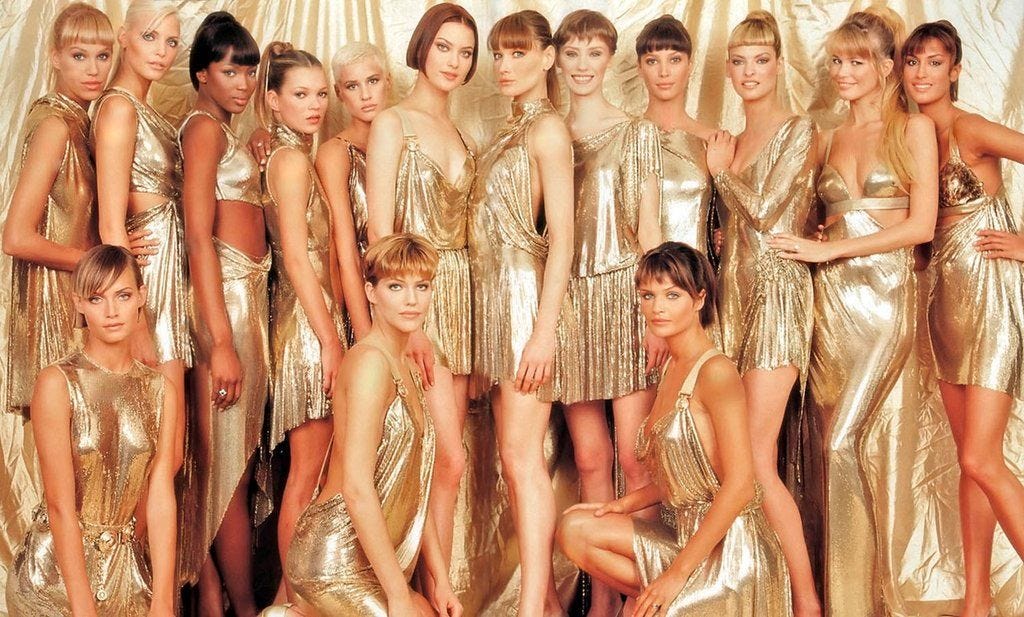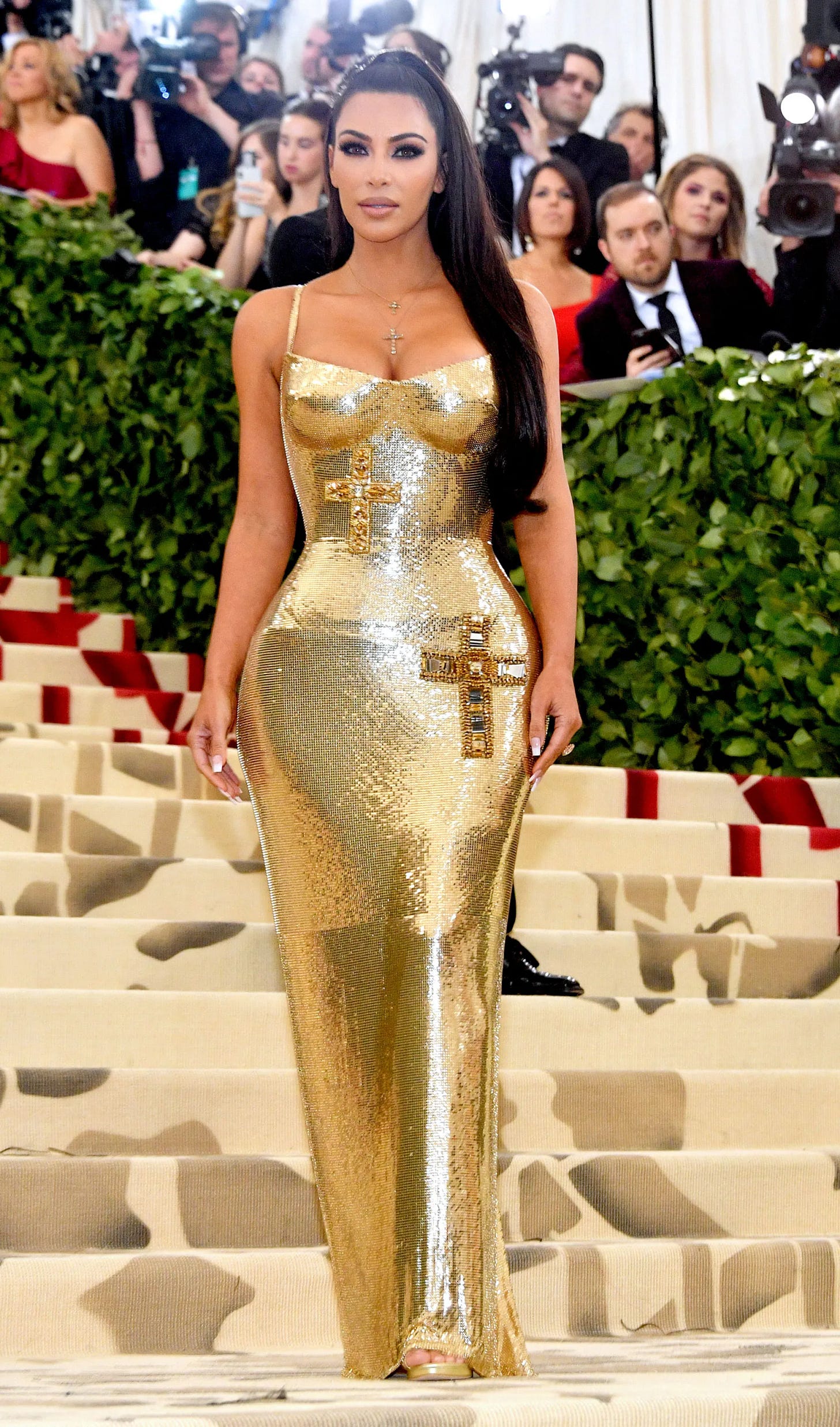You Would Never Break The Chain
Chainmail from history to the red carpet. Inspo for your future paladin.
Chainmail has remained largely unchanged since its invention in the early Middle Ages. Rome collapsed in 476 AD and the Celts are credited with the invention of chainmail shortly after, being replaced for plate mail not once adventuring parties had amassed enough GP but with the improvements in piercing and bludgeoning weapons in the 15th century. By the advent of firearms, chainmail had died out as military armour. Thankfully, the chainmail looks slay enough that we are still graced with the 4-in-1 pattern today. Not on the battlefield though, on the red carpet and down runways, which are their own kind of battlefield.
Historical Accuracy

Chainmail started with shirts that hit below the waist offering protection to the central organs of the body. Sleeves, gauntlets, gloves, and leg coverings came later along with the iconic mail hood. The 4-in-1 pattern where each chain had 4 others welded together was impressively good at withstanding slashing damage from blades.
In a TTRPG context, I always picture chainmail as the top layer over normal clothing. This was not the case, as a padded layer was needed underneath, on top, or both, to protect from piercing and bludgeoning damage and to prevent bruising. Chainmail, as you can probably guess, is HEAVY. This is incredibly unfortunate for the modern knight (read: me) as chainmail epaulets would go extremely hard over a high-collared dress, or even to spice up a turtleneck and jeans. (I dream of owning the epaulets I linked above, I have 5-6 outfits in my closet that are just waiting to be completed with their addition.)
Mail eventually evolved into longer shirts with split hems to accommodate for mounted units, a necessary thing to consider before casting find steed. Before being swept off its feet by a knight in shining (plate) armour.
Illuminated manuscripts are a great resource for chainmail armour inspiration! If I were building a heavy armour-wearing character that needed some shreds of historical accuracy that is where to start. Think about the padded tunics as the customizable layer, what kind of dyes or embroidery represents your character? An Oath of Ancients Paladin would probably sport a deep green padded tunic, if they ranked higher or came from money maybe it is quilted with gold threads in floral motifs.

Chainmail Today
Now we know a little bit about chainmail and it’s reign over the medieval period. Chainmail calls back to the time of knights, chivalry, these very masculine entities, and yet in the modern cultural zeitgeist we see mail worn mostly by women. I always like to think of these looks as a nod to feminism and power, presenting a strong woman in clothing that makes us all think of heroines and magic. And they are usually part of collections being used to tell that story of empowerment.
I love this look from the 2020 Paco Rabanne Ready-to-Wear. The whole collection is immaculate, the military and historical references in each look presented on women does showcase a certain power. The chain shirt and hood with dagger-like fringe are perfect for a vengeance paladin. The look is confident and cool, and when paired with a great sword would take down an adult dragon. Paco Rabanne is known for his chainmail dresses, sending his first one out into the world in 1968 cementing him as a visionary for alternate materials in garment construction.
Gianni Versace sent a series of chainmail looks down the runway in the 90s the ultra-light innovation has been a staple of the fashion house ever since.
I think going for a Greek goddess-type vibe for a chainmail-wearing character in the 1994 collection would be perfect armour. I can picture each one of the looks in the 1994 photo above as the final warrior outfit in anime regular girl to evil-fighting bad-ass transformation montage. Which honestly? That is how I wish I could get dressed in the morning. Could you imagine standing in your closet, closing your eyes, and saying “Killer outfit, activate!” opening them and having a perfect blowout, bangin’ fit, and coordinated weaponry? Epic.
The two looks that most directly translate to our armoured D&D gals are Zendaya at the 2018 Met Gala and Chapel Roan at the 2024 VMAs. They are also conveniently by the same designers as above. Zendaya wore Versace to the 2018 Met Gala and the sheer chainmail for Chapel was Rabanne.
I mean this is perfect, no notes. I mentioned in a TikTok video that this is what you wear as an Oath of Conquest Paladin on your victory parade. The layering and draping are unmatched, I will be using this as character art inspiration.
I picked Chapel’s third look from the VMAs (even though the first two are also amazing) because it included the most chainmail, and this is a brain dump about chainmail. It’s so good. The exposed arms give barbarian, ready-to-brawl energy. I would let a monk character do extra damage if they were wearing those chain gloves.
My Notes
I would fail in this lore drop if I did not acknowledge the problems with medieval fashion, the castle core aesthetic, and subsequently chainmail today. Like all aesthetic “-cores” there is a good and a bad way to take part in the trend. People love the nostalgic vibe, moody interiors, and sense of mystery we get from exploring castle ruins but it also harkens back to a time of deep wealth gaps and lack of equality for minority groups.
The trend is hot on the coattails of cottage core which was very much coopted by tradwives, and coastal grandma the seaside version. I think we could see the same things happen to our cloistered mood boards if we’re not careful. With the rise of MAGA conservatism in American politics, we’re already seeing the repealing of DEI initiatives as our modern-day feudal lords (corporations) vie for control and ways to make us easier to oppress. Feudalism was built on the backs of the oppressed and the glamorization of the medieval era conveniently leaves this out, focusing on nobility.
It was also a time when women were the property of the men around them. Red carpet chainmail looks on women always invoke commentary about Joan of Arc. Subverting gender roles and being able to rise to power in a male-dominated field. We desperately need to keep these conversations front and center, especially as reproductive freedoms and bodily autonomy are on the line. With the rise of the castle core aesthetic, these looks could hold less of that powerful statement and instead could be analysed in a “hopping on the trend” type of way.
We’re better off than serfs in fields, yes, but we need to take care in our obsession with an era that puts the white man and the grossly wealthy front and center once again.









